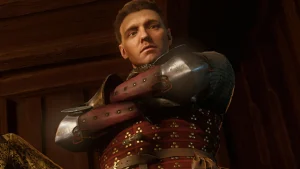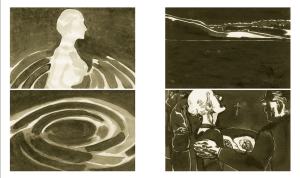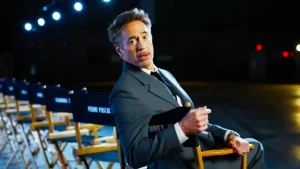Despite the real-world controversies involving author J.K. Rowling, the Harry Potter franchise remains one of the most beloved and durable pop culture phenomena of the modern era. The original series of seven books created a global sensation, selling hundreds of millions of copies and enchanting an entire generation of readers with its richly detailed world of magic, friendship, and the timeless battle between good and evil. This unprecedented literary success was translated into a series of eight blockbuster films that brought the Wizarding World to life with stunning visuals and a perfectly chosen cast. With HBO now preparing to reboot the Harry Potter saga as a live-action television series, the story’s enduring power is undeniable.
However, the journey from page to screen was not without its missteps. While the Harry Potter films largely succeed in capturing the spirit of the books, they also contain a handful of creative choices that have been almost universally despised by the dedicated fanbase. For many viewers, these scenes stand out as frustrating blemishes on an otherwise masterful cinematic achievement.
One of the most perplexing additions to the entire film series is the Death Eater attack on the Weasley family home during Harry Potter and the Half-Blood Prince. The scene, which does not exist in the book, sees Bellatrix Lestrange (Helena Bonham Carter) and Fenrir Greyback (Dave Legeno) suddenly appear at the Burrow over the Christmas holiday, taunting Harry (Daniel Radcliffe) into a chase through the surrounding fields before setting the entire house ablaze. The sequence was likely intended to inject a dose of action into a story that is largely focused on emotional turmoil and exposition. The problem is that the entire event is narratively pointless and creates a significant plot hole, as by the next film, the house is magically back to normal with no explanation.
Harry Potter fans were particularly annoyed because the time spent on this meaningless set piece could have been used to adapt crucial backstory about Voldemort’s past, which was largely cut from the film. The burning of the Burrow ultimately feels like a cheap attempt at creating drama that adds nothing to the story and only serves to disrupt the established narrative.
The final confrontation between Harry and Lord Voldemort (Ralph Fiennes) is the climax of the entire saga, and the Dark Lord’s death is a moment of immense thematic importance. In the book, Voldemort’s own Killing Curse rebounds, and he dies a mundane, human death, his body hitting the floor with a thud. This ending powerfully underscores the central theme that, despite his obsessive quest for immortality, Voldemort was nothing more than a mortal man named Tom Riddle.
The movie adaptation of Harry Potter and the Deathly Hallows: Part 2 opted for a more visually spectacular, but thematically hollow, conclusion. Instead of dying like a man, Voldemort slowly disintegrates into flakes of ash that dissipate into the wind. This choice is widely disliked by fans because it robs the moment of its meaning. The visual of his body turning to dust makes him seem like a supernatural entity rather than the fear-driven human he truly was, trading the book’s statement on mortality for a generic “disappearing villain” effect.
In a moment of quiet despair after Ron Weasley (Rupert Grint) abandons them in Harry Potter and the Deathly Hallows: Part 1, Harry tries to lift Hermione’s (Emma Watson) spirits by asking her to dance to a song on the radio. The scene, which was not in the book, shows the two best friends sharing a tender moment of comfort in the bleakness of their hunt for Horcruxes. While the intention was to showcase their deep platonic bond, many fans felt the scene was misguided.
The primary criticism is that the dance introduces an undercurrent of romantic tension between Harry and Hermione that is absent from the source material. For many book readers, their relationship was always portrayed as a sibling-like friendship, and this added scene was seen as a betrayal of that dynamic. The scene also fueled the arguments between those who believed Harry should have ended up with Hermione, while frustrating those who were invested in the established romance between Ron and Hermione. Though well-acted, the moment ultimately felt like a confusing addition that muddied the waters of the Harry Potter trio’s core relationships.
Perhaps no single line reading in the entire Harry Potter film series has generated as much fan outrage as Albus Dumbledore’s (Michael Gambon) reaction to Harry’s name coming out of the Goblet of Fire. The book famously describes the headmaster’s approach with the line, “‘Did you put your name in the Goblet of Fire, Harry?’ he asked calmly.” This controlled demeanor is a defining trait of the literary Dumbledore, a wizard who rarely loses his composure.
However, the film version of Harry Potter and the Goblet of Fire presents a radically different interpretation of the scene. Instead of calm, Dumbledore (Michael Gambon) sprints across the room, aggressively grabs Harry, and shouts the question in his face. This unhinged portrayal is widely seen as a complete mischaracterization of the wise and serene headmaster from the books. The moment has since become an infamous meme, forever remembered by fans as the time the movie Dumbledore acted in a way the book Dumbledore never would.
The decision made in Harry Potter and the Deathly Hallows: Part 2 for Harry to snap the Elder Wand in half and throw it away is arguably the most hated change from the books. In the novel, Harry’s final act is far more thoughtful of the wand’s immense power and history. First, he uses the Elder Wand to repair his own beloved phoenix feather wand, which had been broken earlier in their journey. He then chooses to return the Elder Wand to Dumbledore’s tomb, intending for its power to be broken naturally when he one day dies undefeated.
The movie’s ending completely erases this nuanced conclusion. By having Harry break the wand, the film not only robs him of the chance to reclaim his original wand, but it also presents a simplistic and arguably less logical solution to the problem of the wand’s power. This change fundamentally alters the final moments of Harry’s journey, replacing a mature choice with a dramatic but ultimately less satisfying gesture. For many fans, this decision represents a frustrating misunderstanding of the story’s core themes.
Which movie moment from the Harry Potter series do you dislike the most? Leave a comment below and join the conversation now in the ComicBook Forum!
The post 5 Most Hated Harry Potter Movie Moments appeared first on ComicBook.com.




